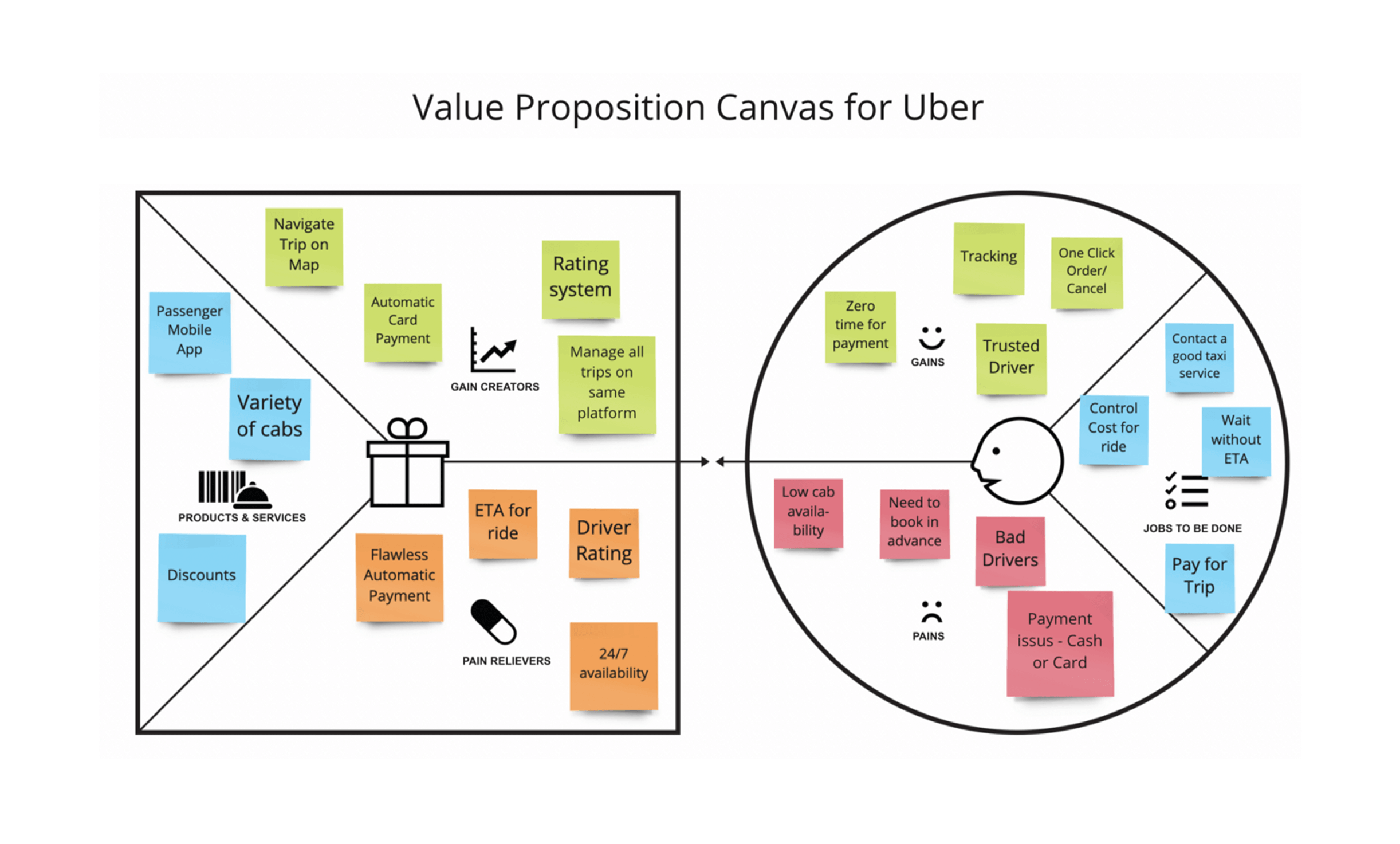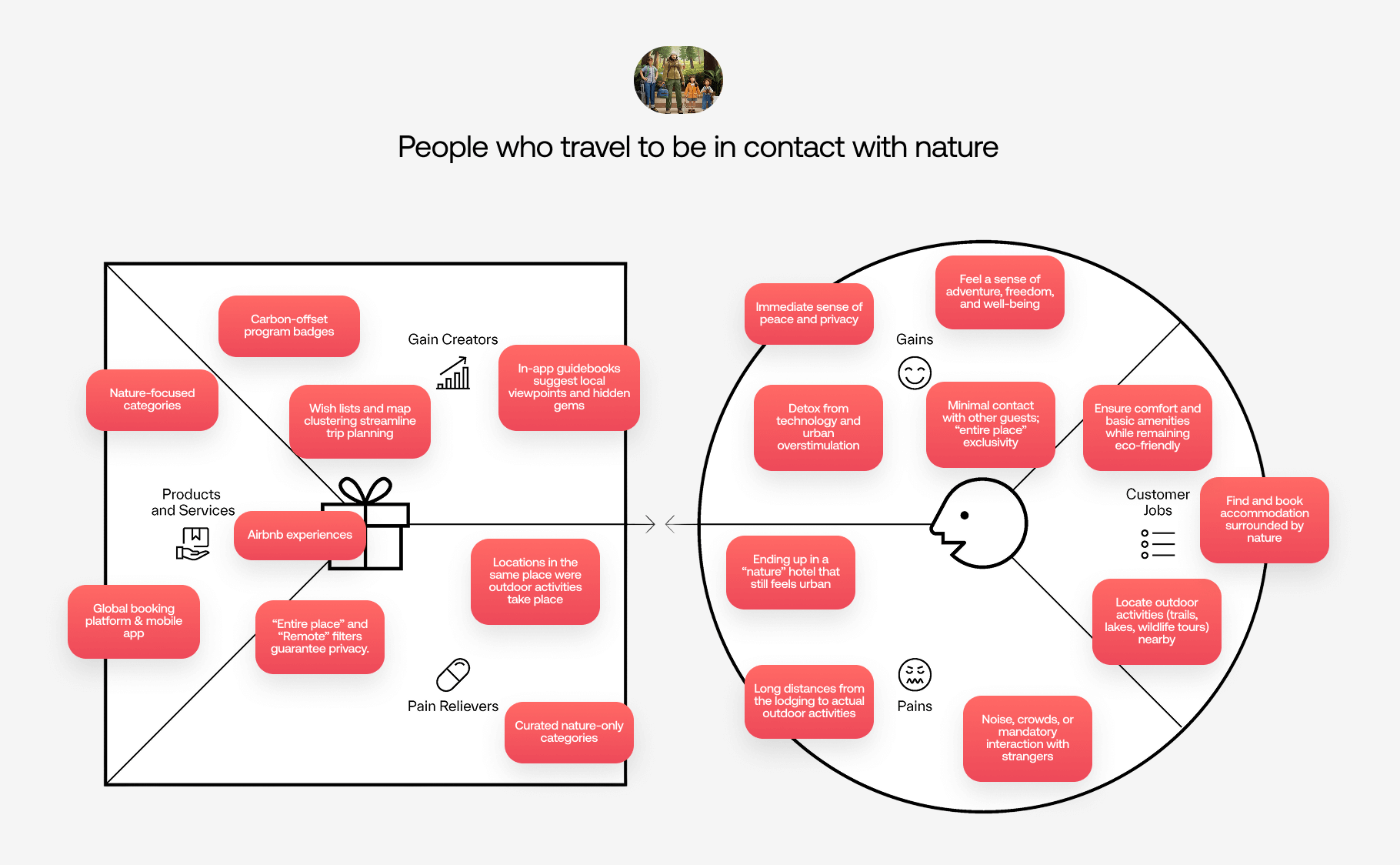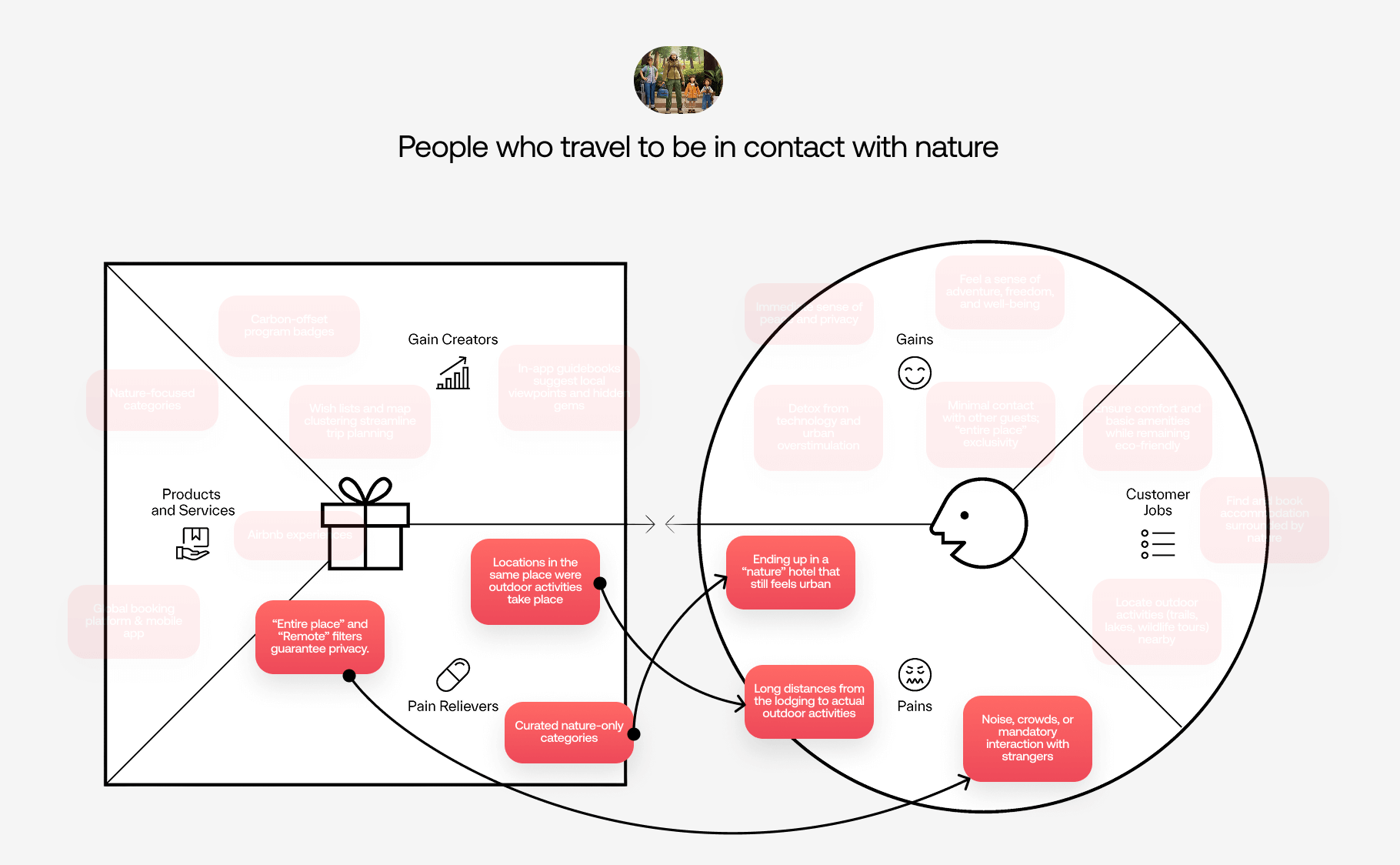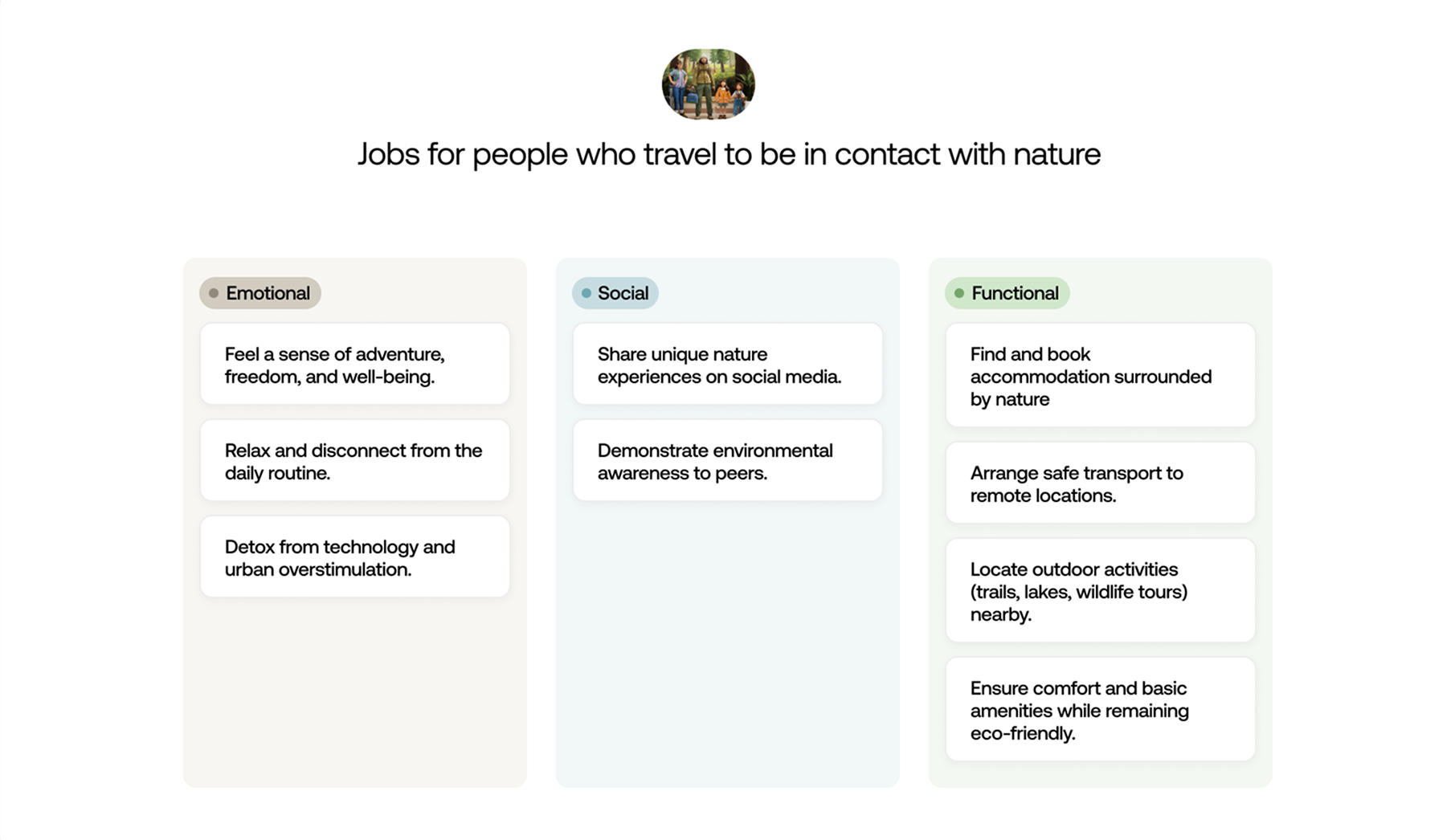
Business Insights
How Airbnb engineered a breakthrough campaign that perfectly aligns its offering with customers’ jobs, pains, and gains.

by Ignacio Margulies
Introduction
It’s all too common to see companies bombard customers and prospects with features, prices, and promotions—while failing to recognize and communicate what truly matters.In this new Insights post, we’ll examine what we consider a masterclass from Airbnb on advertising that aligns perfectly with its value proposition.
Communicating via the Value Proposition
Great products solve meaningful problems for one—or several—groups of people. When we analyze a company’s value proposition, we should see exactly how its products and services address the pains, gains, and jobs-to-be-done of each user segment.

If the reason people choose our offering is the problem we solve or the goal we help them achieve, then it seems obvious our communications strategy should center on that point. Yet in most cases, it doesn’t. In fact, many companies don’t even have a clear value proposition or know why customers pick (or ignore) them over competitors.
Ultimately, our communications should ensure our target audience:
Ultimately, our communications should ensure our target audience:
Strongly identifies with the problem or goal
Recognizes that our product or service can help
Understands how it provides that help
The Airbnb case study
Airbnb disrupted the accommodation market not only through its business model but also by how it communicates its value proposition. Its advertising is built on a fundamental premise: deeply understanding users’ pain points and putting them front and center.
What Airbnb has learned over the years is that offering a single value proposition to a mass market is inefficient and wastes millions in marketing and growth.
In 2024, it launched a new campaign that completely redesigned its messaging, showcasing—more vividly than ever—how the product solves customers’ problems, while acknowledging that not all users share the same needs and motivations.
Airbnb identified eight distinct user segments and created individual commercials for each. Every spot clearly highlights:
What Airbnb has learned over the years is that offering a single value proposition to a mass market is inefficient and wastes millions in marketing and growth.
In 2024, it launched a new campaign that completely redesigned its messaging, showcasing—more vividly than ever—how the product solves customers’ problems, while acknowledging that not all users share the same needs and motivations.
Airbnb identified eight distinct user segments and created individual commercials for each. Every spot clearly highlights:
%20(1).png)
From that point on, they created separate ad spots for each segment, making it very clear:
Pains of the specific segment in a defined context
Pain relievers that illustrate the perceived value of choosing a better service
Jobs to be done that set the scene and trigger the commercial (e.g., finding a place to stay for a vacation with friends)
Gain creators—the extra benefits users experience by booking through Airbnb
Relevant services they can select
A Close-Up Look at the Value Proposition
Instead of talking prices or property counts, Airbnb structures its messages around real stories that resonate with these pain points. Let’s zoom in on the segment of travelers who want to connect with nature.
The key is to match our product or service to the segment’s pains, gains, and jobs.
The key is to match our product or service to the segment’s pains, gains, and jobs.

Having this map fleshed out—and validated—is the most powerful marketing tool a team can wield, because users compare options that solve their problems and add value.

Watching the commercial, you can quickly spot how Airbnb solves users’ problems through its platform and illustrates that visually. For example:
Pain: Ending up in an urban hotel, far from nature
Pain reliever: An exclusive stay inside a natural reserve
The Emotional Factor
Every user is a person, and people are driven by emotions. Even when we believe we’re rational, our subconscious is hard at work when making decisions.
These commercials not only outline the value proposition; they also surface the emotional jobs, such as:
These commercials not only outline the value proposition; they also surface the emotional jobs, such as:
Feeling adventurous, free, and well
Relaxing and disconnecting from day-to-day routines
Detoxing from technology and urban overstimulation

By doing so, the targeted segments empathize not only with the problem being solved but also with what matters most to them—what strikes an emotional chord. This has a tremendous impact on decision-making.
Neural Correlates of Behavioral Preference for Culturally Familiar Drinks.
The research showed that activation of emotional and memory networks occurs before the final decision is made.
Other Key Takeaways
Core Elements of the Strategy
Emotional storytelling: Real stories from guests and hosts
Immersive visuals: Spaces portrayed as living experiences, not hotel catalogs
Consistent messaging: Focus on the experience, not the transaction
User-generated content: Authenticity through real stories
Results of This Approach
By connecting directly with users’ pains and emotional desires, Airbnb achieves:
Higher engagement in advertising campaigns
Stronger emotional bonds with the brand
Clear differentiation from traditional competitors
Transformation of users into brand evangelists
Watch the spots for every customer profile
If you’d like to dive deeper into Airbnb’s campaign, you can watch all the spots here.


